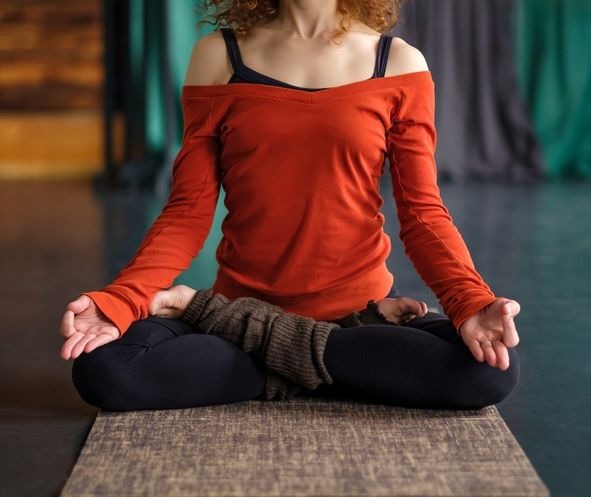Bhastrika Pranayama: how to breathe fire?
Caution : You must consult your doctor for your health. This page presents only a personal and alternative point of view which should not be considered as an attempt to prescribe medicine.
Bhastrika Pranayama is a breath of fire which gives energy and stability (strength) to the body.
This digestive fire yoga can be practiced alone or in a group.
One can also synchronize Bhastrika Pranayama with visualizations, mantras, bhandas and mudras for even more efficiency.

But if you are a beginner, just focus on the breathing exercise itself.
Understanding the practice of the art of fire breathing
Before starting the exercise of Bhastrika Pranayama, you must observe your breathing for a few minutes.
Then, on an exhale, you should completely empty your lungs while exhaling intensely.
The breathing of Bhastrika Pranayama is done quickly and briefly with an average of about 50 inhales and exhales per minute.
A rapid inspiration and exhalation of one second per cycle activates what is called in Yoga: the forge bellows.
This breath is completely concentrated in the belly, precisely at the level of the navel, because the forge bellows is precisely activated to increase your digestive fire, where the God Agni (god of fire) is located.
Then after several quick cycles, finish with a deep exhalation.
After this, take a break with empty lungs, which will be particularly long since you have just decreased your CO2 concentration with hyperventilation.
Then follow with a deep inspiration, followed by a full lung retention which will further boost your CO2 level with a release of adrenaline and bicarbonate.
The result is an internal fire which embraces the body and circulates Prana through all the nadis.
The practice of this pranayama yoga technique has a singularity that makes it even more effective and unique.
In fact, Bhastrika Pranayama obeys a simple, but obligatory principle: rhythm.
It is for you to reproduce identically every few minutes the same breathing pattern while always keeping the same pace until the end (which is far from being obvious).
You should therefore have in one minute the same number and the same intensity of inhales as of exhalations.
NOTE: if a minute is untenable for you, already do the exercise over 10 seconds and gradually increase ...
Also, in normal breathing the exhalation is longer than the inhalation, but with Bhastrika Pranayama you need to balance the inflow and outflow of your breath perfectly.
Bhastrika Pranayama can also be done with Ujjayi breathing, which is a bit complicated at first.
You should actually look for air friction in the throat.
Also, you can also contract the Mula Bandha, that is to say make the contraction of the sphincter of the anus to control the movement of the belly.
This mastery of abdominal movement helps prevent over-inflating the belly, but above all prevents the organs of the digestive system from coming out too much.
If you are a beginner, you can practice Bhastrika Pranayama for up to 2-3 minutes without interrupting your breathing.
Once accustomed, you can gradually increase the time of the sets and the air retention in the lungs to reach at least 25 minutes: the Ghatika.
NOTE: beware of hyperventilation which can be very dangerous if poorly controlled. Stop exercising immediately if you have a dizzy spell or other odd symptoms.
Synchronize Bhastrika Pranayama with visualizations
You can do several visualizations along different axes during Bhastrika Pranayama.
To spread energy from the root of the spine to the solar plexus, for example, there is a very useful technique.
Try to visualize a red sun at your base and then another bright or white sun at your fontanel.
Imagine the breath of air that rises with the red sun from the spine to the white sphere when inhaling and coming down again during the exhalation.
During the visualization, you should feel the energetic shift that you are picturing in the spine.
Synchronize Bhastrika Pranayama with mantras
You also have the possibility during the practice of Bhastrika Pranayama to recite several mantras.
Oral or mental recitation of mantras can promote the outbreak of digestive fire and the expansion of energy throughout the body.
For example, you can say “AM” orally or mentally on inspiration and “SA” on expiration.
NOTE: mantra recitation can be very powerful, again, go gradually and only if the mantra resonates with your heart, otherwise choose the word that suits you (the name of your god for example). em>
Synchronize Bhastrika Pranayama with bhandas and mudras
If you want to increase your concentration and the intensity of energy during Bhastrika Pranayama, you can also add other mudras and bhandas.
As such, the Kechari mudra involves touching the soft palate with the tip of the tongue.
The Shambavi mudra aims to bring the eyes to a point in the center of the forehead.
Jalandhara bhanda, on the other hand, consists of contracting the throat during the period of air retention in the lungs.
NOTE: All of these techniques must be taught in person by an experienced Yoga teacher who will guide you and avoid all technical errors.
Bhastrika breathing exercise: its benefits?
The practice of Bhastrika Pranayama stirs up the divine fire that lies dormant within you.
Knowledge of digestive fire breathing techniques is essential to awaken the energies of power, strength, endurance and stability in order to make Man a balanced being spiritually, psychologically and physically.
The fire of Bhastrika Pranayama also strengthens our capacity for digestion, both physiologically and emotionally and mentally.
In other words, you improve your digestion of food, but also the digestion of negative emotions as well as those of repetitive thoughts (which the average person has trouble digesting).
The development of fire promotes well-being, a healthy weight, vigor and health.
Daily practice of Bhastrika Pranayama is necessary to stoically face everyday events with wisdom, composure and without nervousness.
In other words, it's a great technique to stay calm in all circumstances.
And finally, the fire of Bhastrika Pranayama loosens the tensions of the solar plexus and the belly.
My personal opinion on the Bastrika technique
There are many ways to practice the Bastrika Pranayama technique.
You can do it very subtly, in a neutral way or even in a very powerful way like a kriya (purifier).
In the latter case, take handkerchiefs to wipe up all the colds and dirt that will come out of your nasal cavity.
However, I believe that this technique is to be avoided in the era we are living in today.
Indeed, most beginners who come to Yoga have a desire to better manage their stress.
This physiologically means that these people are already hyperventilating to varying degrees, and therefore losing too much CO2 (hypocapnia).
Practicing Bastrika with an already stressed nervous system is quite simply suicide (you exhaust your adrenal glands).
For the beginner wanting to control his stress, it will be preferable to use deep breathing exercises making sure to have exhalations twice as long as the inspiration.
This will soothe the nervous system and INCREASE your CO2 concentration (as opposed to exercising hyperventilation).
To conclude, Yoga has many wonderful tools if you know WHAT to practice and HOW, otherwise Yoga Pranayama can turn into a destructive tool.
It will therefore be advisable to get closer to an experienced person who will guide you to perfection.
Otherwise, train yourself in simple and powerful exercises, such as Intermittent Breathing, which are safe.
❤ The ultimate guide to breathing
Intermittent Breathing : Discover the method to quickly relieve your anxiety and chronic fatigue (positive effects from the first use).Read also :
Previous article : Allergies and difficulty in breathing : what solutions?
Next article : Lung cancer: is there a natural treatment?

